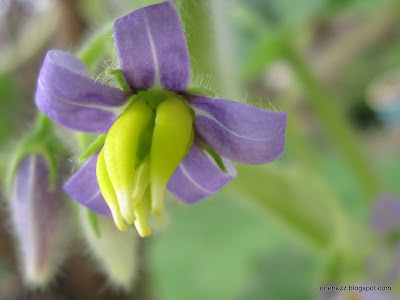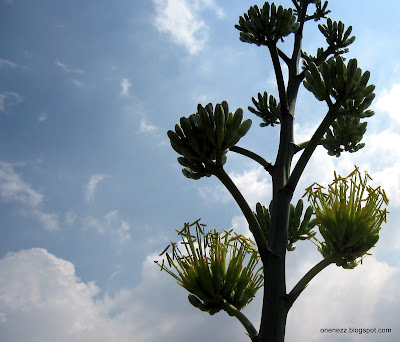Have you ever wondered why the dragon fruit flower is designed as such?
The anthers which consist of the yellow pollens are part of the male.
The greenish portion that resembles a Tillandsia, known as stigma is part of the female.
If the stigma shifts to the centre of the flower, surrounded by anthers, pollen grains will naturally drop on the stigma and fertilization occurs easily.
If the stigma can shift location slightly, there would be no need for insects to handle pollination.
Yet nature is as such that the male and female are nearby yet not touching.
In fact, the female is taller than the male.
If it is the other way around, pollination would occur easily because pollen grains will drop on the stigma due to wind and gravity.
Now, we need to rely on insects to complete the process of pollination.
What if there are no more insects in the world?
Does it mean we don't deserve to eat fruits without insects?
Flowers often bloom one at a time for a young plant.
The insects' role is not meant for handling cross pollination because even without cross pollination, dragon fruits still form.
So why is the design and location of the stigma and anthers are as such that we need the bugs to transfer the pollens a few centimetres away?
Why does it blooms at night and closes in the morning?
My Conclusion
No night bugs, No pollination, No fruits.
Solution : Hug More Bugs!
Alternative Solution : Always Hand Pollinate.

Previously I hand pollinated using a cotton bud to transfer the pollens to the stigma.
You could also use a clean paint brush instead of a cotton bud.
This time around, I just pluck a few anthers and left them on the stigma.
I believe I would see a dragon fruit soon.
But I can't help wonder why the design of the flower is as such.
UPDATE
I believe Autumn Belle's deduction is correct.
The design is as such in order to reduce the possibility of self pollination.
Although self pollination do produce tasty fruits, the genes of the seeds may not be as healthy as compared to those which are cross pollinated.
Cross pollination would produce better quality seeds and eventually stronger off springs.
Thanks again for offering this suggestion, Autumn Belle.
This is one the fruits produced by the same plant previously.



















































